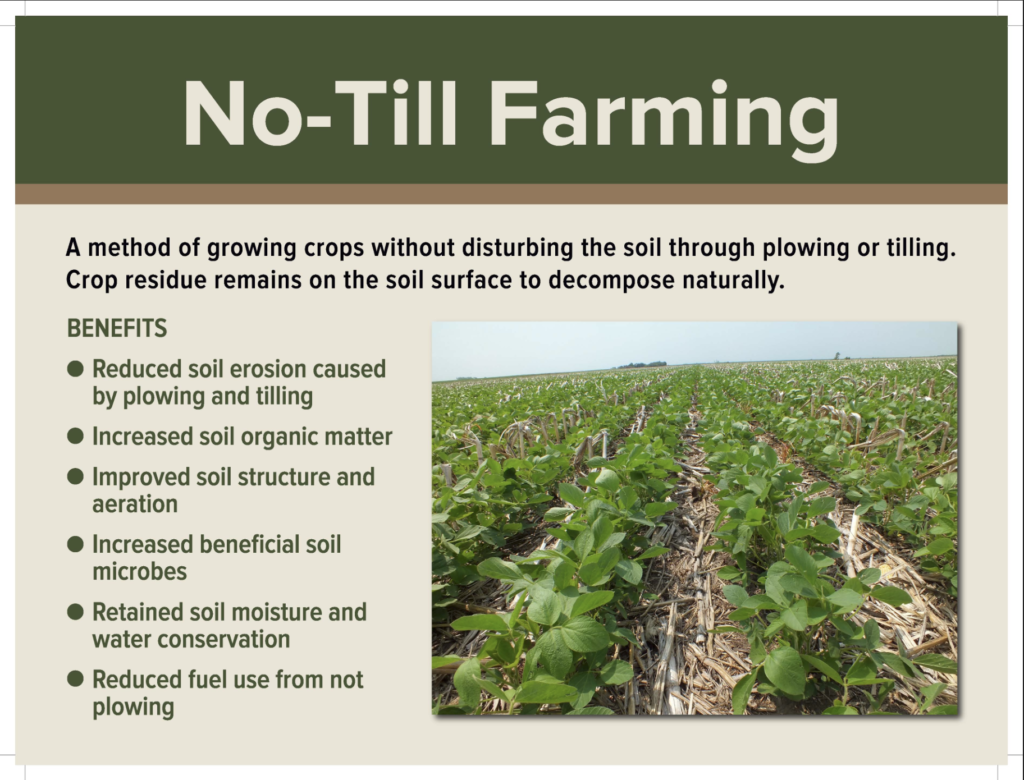
Understanding No-Till Farming and Its Benefits
No-till farming is an innovative agricultural practice that involves growing crops without turning or disturbing the soil. Instead of traditional plowing, which breaks up the soil structure, no-till methods preserve the natural composition of the earth by allowing crop residues to decompose on the surface. This approach not only minimizes soil erosion but also enhances overall soil health, making it an ideal strategy for sustainable homesteading.
One of the primary benefits of no-till farming is the improvement of soil health. By refraining from tilling, organic matter is preserved, which enriches the soil with nutrients and fosters a diverse ecosystem of microorganisms. This biological diversity is essential in promoting nutrient cycling and improving soil fertility, leading to healthier crops. Studies have shown that no-till practices can increase soil organic carbon levels, a crucial component for sustaining plant growth and vitality.
Another significant advantage of no-till farming is its ability to reduce erosion. When land is left undisturbed, the soil maintains its structure, allowing roots to anchor firmly and minimizing the displacement of topsoil by wind and rain. This not only protects the land from degradation but also contributes to better water retention. As excess moisture is absorbed rather than run-off, the soil becomes more resilient during drought conditions, thus supporting crop yield even under varying weather patterns.
Furthermore, no-till farming promotes biodiversity, a vital element in achieving sustainable agricultural practices. By providing a stable environment for various species, no-till fields can support beneficial insects and wildlife, which enhances pollination and pest control. The incorporation of cover crops in no-till systems can also prevent weed growth while providing habitat for diverse organisms. These benefits illustrate why integrating no-till practices is essential for sustainable farming and homesteading, promoting both ecological balance and productivity.
Choosing and Managing a Diverse Array of Crops
In a no-till farming system, cultivating a diverse array of crops is essential for enhancing soil health and achieving optimal yields. By planting various crops, homesteaders can promote biodiversity, which in turn supports ecosystem services such as pest control, pollination, and improved soil structure. The selection of complementary crops is a vital aspect of this practice, as certain plants can enhance each other’s growth and resilience to pests and diseases.
When choosing crops for a no-till system, one should consider the characteristics of each plant, including growth habits and nutrient requirements. For instance, incorporating legumes into the crop rotation can enhance nitrogen levels in the soil, benefiting subsequent crops. This synergistic relationship not only optimizes nutrient availability but also reduces the need for synthetic fertilizers, further supporting sustainable agriculture.
Another effective strategy is companion planting, where specific plants are grown together to maximize their benefits. For example, pairing tomatoes with basil can deter pests and improve flavor. Likewise, the introduction of flowering plants can attract beneficial insects that assist in pollination and natural pest management. Homesteaders should also explore local agricultural extensions or research to determine which crop combinations are effective in their region.
Additionally, practicing crop rotation is crucial as it helps prevent the buildup of soil-borne diseases and pest populations. By rotating crops seasonally, farmers can break pest cycles and enhance soil fertility. Implementing an organized planting schedule, supported by thorough record-keeping, can aid in maintaining diversity and assessing crop performance over time.
Ultimately, managing a diverse array of crops in a no-till farming system requires careful planning and monitoring. By prioritizing biodiversity, homesteaders can actively promote soil health while enjoying the numerous benefits of a varied harvest.
The Homesteading Lifestyle: Growing Your Own Food
Homesteading is more than just cultivating crops; it represents a commitment to a self-sufficient lifestyle that prioritizes sustainable practices, personal health, and community well-being. At its core, it embodies the principles of growing your own food, which not only fosters a deeper connection to the land but also promotes an understanding of the food systems that sustain us. Whether it’s vegetables, herbs, or fruits, the process of nurturing your own garden allows individuals to take control of their diets. This control is essential in an era marked by an overwhelming variety of processed foods, which can lead to health concerns and a disconnect from the source of our nourishment.
One of the most significant joys of homesteading entails reaping the rewards of your labor. As crops flourish, they provide not only sustenance but also an immense sense of accomplishment and empowerment. Growing a diverse range of crops can stimulate personal creativity in the kitchen, encouraging individuals to explore new recipes and cooking methods that emphasize fresh, locally sourced ingredients. This practice resonates with the modern movement towards mindful eating, where individuals are encouraged to consider the origins of their food, its nutritional value, and its environmental impact.
Furthermore, a homesteading lifestyle heavily emphasizes community engagement. Sharing surplus produce with neighbors or participating in local farmers’ markets nurtures relationships and fosters a sense of belonging. As more people embrace the ideals of homesteading, communities become better connected, making efforts to support one another in creating a system that values local sourcing and sustainability.
However, the journey toward self-sufficiency is not without its challenges. Weather conditions, pest management, and the need for continual learning in agricultural practices can pose obstacles. Nevertheless, overcoming these barriers can enhance personal resilience and improve the ability to adapt to unforeseen circumstances. Overall, the homesteading lifestyle represents a holistic approach to food production, aligning with contemporary values of health, sustainability, and community integration.
Selling Farm Fresh Eggs and Honey: A Profit from Your Homestead
Embracing no-till farming not only encourages sustainable practices but also opens avenues for generating income through ancillary products such as farm-fresh eggs and honey. Raising chickens for eggs and bees for honey can serve as lucrative ventures if approached with careful planning and adherence to local regulations.
When it comes to chickens, selecting appropriate breeds based on egg production, temperament, and climate adaptability is crucial. Common layers include Rhode Island Reds and Leghorns, known for their high egg yield. Providing a safe, spacious environment along with proper nutrition ensures healthy hens and maximizes egg production. It is also essential to maintain ethical practices, such as humane housing and regular veterinary care, to promote animal welfare and adherence to local laws governing poultry farming.
Similarly, bee-keeping requires sufficient knowledge and understanding of beekeeping practices. Establishing and tending to hives necessitates attention to detail, including ensuring the availability of flowers for foraging and maintaining hive health. The benefits of harnessing honey extend beyond immediate sales, contributing to local biodiversity through pollination, which can bolster crop yields in nearby farms.
When it comes to marketing, building a strong local presence is key. Establishing relationships with local markets, farmers’ markets, and community-supported agriculture (CSA) programs can enhance visibility and demand for farm-fresh eggs and honey. Crafting narratives around responsible farming practices and sustainable food sources can resonate with environmentally conscious consumers, further strengthening the market appeal.
In addition to providing a sustainable source of income, the sale of farm-fresh eggs and honey positively impacts the local economy by supporting small-scale agriculture and encouraging community engagement. This not only elevates awareness about the value of local produce but also fosters relationships among local farmers and consumers, creating a thriving ecosystem centered around sustainable homesteading.
